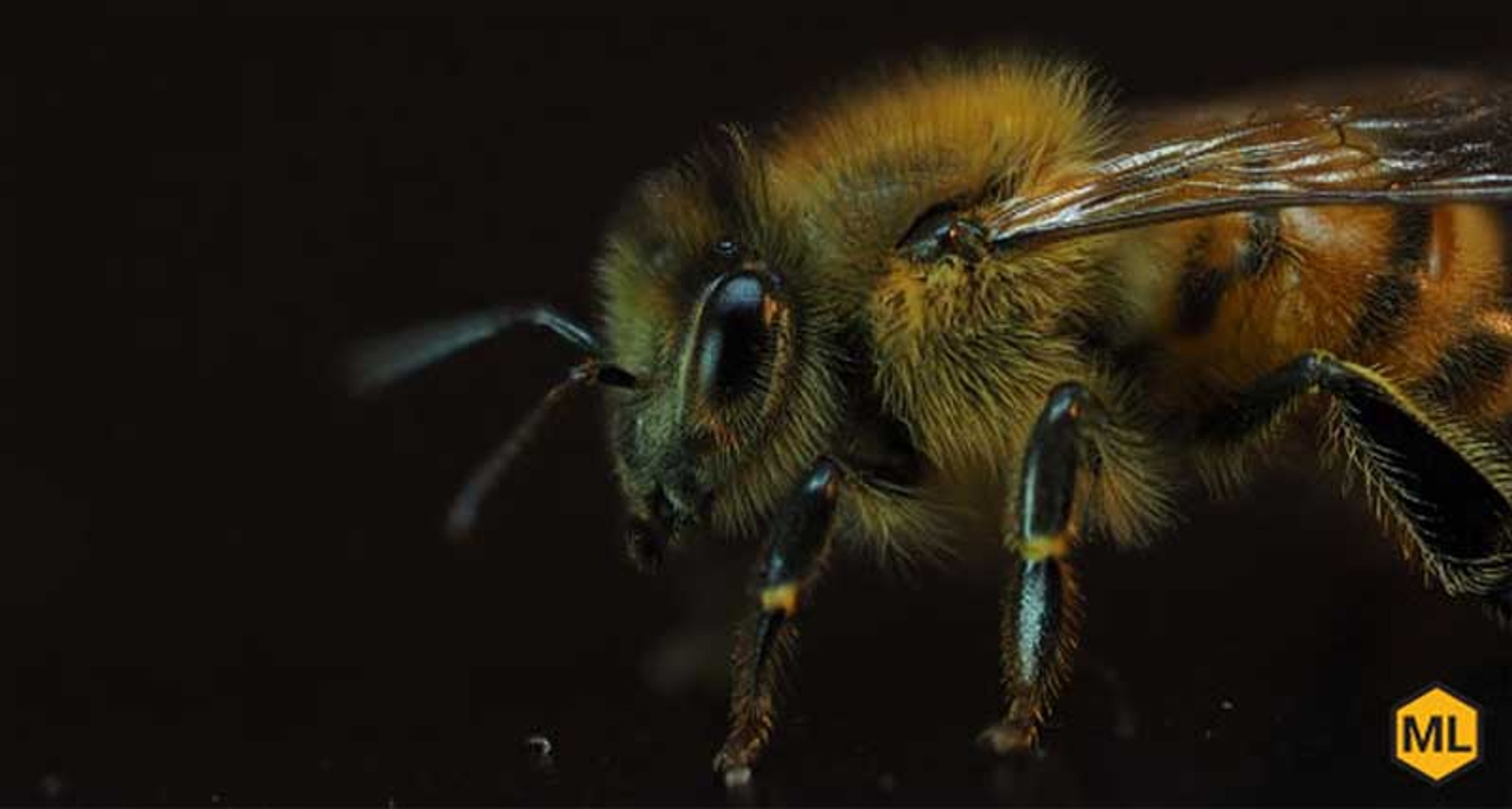The Basic Anatomy Of The Honey Bee
Despite their small size, honey bees are complex creatures with many fascinating characteristics, from long tongues that suck up nectar to stiff hairs that collect pollen. Their bodies are designed specifically for the role they play in nature. Learn all about the basic anatomy of the honeybee with this guide.
There are many parts that make up a honey bee! They have three pairs of legs, antennae, a stinger, wings, and a hard, wax-covered exoskeleton. Additionally, like all insects, their bodies consist of three main segments: the head, abdomen, and thorax.
Head
The head of a honey bee includes the antennae, eyes, and mouth. The antennae have thousands of smell, taste, and touch receptors that help the bee navigate the world around it. Because they spend much of their time in poorly lit hives, bees rely more on their antennae than on their eyes. This is why their eyes are designed to detect motion rather than to see high-resolution images. Bees have five eyes: two compound eyes that sense and focus on light, and three simple eyes that don’t focus but instead provide information on the intensity of the light around them. Finally, a honeybee’s mouth contains organs that allow them to suck and chew materials. The mandibles act as teeth and allow the bee to chew wood or wax. The proboscis is a tube-like organ that lets the bee suck in nectar, water, and honey.
Abdomen
A honey bee’s abdomen appears less complicated than other parts of the body, but it houses important organs such as the digestive tract and—in queen bees—the reproductive system. Worker bees have wax scales on their abdomens, produced by their own wax glands when they’re a week or two old. The abdomen is also the location of the stinger and venom glands. Only female bees have stingers: sharp, barbed organs that bees use to attack predators and inject them with venom.
Thorax
The thorax is the location of a bee’s legs and wings. Bees have two sets of wings: larger front wings and smaller hind wings, which work together in perfect synchronization during flight. The thorax also houses two sets of flight muscles—vertical and longitudinal—that contract in turn to raise and lower the wings. A honey bee’s legs have stiff hairs that allow it to collect pollen and brush itself clean. Worker bees also have special pollen baskets on their hind legs. This allows them to brush pollen from their bodies and into the basket for safe transport back to the hive.
Every element in the basic anatomy of a honeybee works together to create an efficient, hard-working insect. Interested in learning more about honey bees? You can buy honey bees and put your knowledge and passion into your own beekeeping career.

